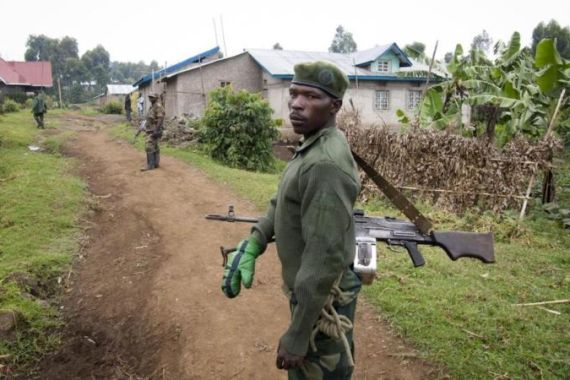Who are DR Congo’s M23 rebels?
The rebel group was formed by former soldiers in the Congolese army, mostly ethnic Tutsis, but details are often murky.

The M23 rebel group, which operates in the eastern part of the Democratic Republic of Congo, was recently reported to have captured the city of Goma, a provincial capital with about a million residents on the Rwandan border.
The group now controls vast swaths of eastern Congo, an area rich in minerals.
Its full name is the March 23 Movement, referring to the date peace accords were signed in 2009 between the DR Congo’s government and the National Congress for the Defence of the People (CNDP), a rebel militia comprised mostly of ethnic Tutsis.
Under the accords, former CNDP fighters were supposed to have been integrated into the national army. But some of them say they were not treated fairly, and that the peace treaty was never fully put into effect – ostensibly the reason they defected from the army and formed the M23 movement.
Many suspect M23 is aided by Rwanda and Uganda, both of which share borders with the eastern DRC. Al Jazeera’s Nazanine Moshiri has reported that former members of M23 have told journalists Rwanda is supplying the rebels with weapons and ammunition.
And a confidential report written by the UN Security Council’s Group of Experts says Rwanda’s defence minister is co-ordinating the M23 rebellion, and that both Rwanda and Uganda are arming M23. Both countries strenuously deny this.
M23’s fighters are believed to be led by Bosco Ntaganda, nicknamed “The Terminator”, who is now wanted by the International Criminal Court for allegedly conscripting child soldiers.